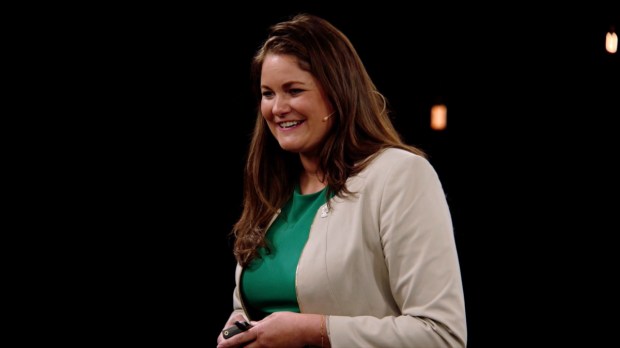New president Javier Milei's election represents shift away from nation's Peronist legacy
Associated Press
Published February 19, 2024
BUENOS AIRES, Argentina (AP) — Early every morning, just as she reaches her workplace at a labor union in Buenos Aires, Ángeles Celerier heads to the chapel and prays to Saint Cajetan, Saint Teresa and Eva Perón.
Perón — unlike the others — has not been canonized by the Vatican, but this doesn’t matter to Celerier.
ARGENTINA’S POVERTY LEVEL RISES TO 57.4%, MARKING 20-YEAR HIGH
"For me, she is the saint of the people," the 56-year-old Argentine said.
Many union members think of Evita as their patron or gaze at her photos with nostalgia, feeling that she and her husband, three-time President Juan Domingo Perón, brought prosperity to their country through an equality and social justice-driven movement that was named after him in the 1940s: Peronism.
That movement is currently the biggest opposition force in Argentina. And some political observers attribute the recent vote to elect President Javier Milei as a means to defeat Peronism and its previous hold on the presidency.
"For us, she is the spiritual reservoir of the people," said Julio Piumato, human rights director at the largest union in Argentina. He signed a 2019 document requesting Evita’s beatification.
"No other figure has a deeper significance," Piumato said. "The humble sectors are synthesized in Evita."

A mural of Argentine former first lady María Eva Duarte de Perón, better known as Evita Perón, or Evita, depicting her with a saints halo, adorns a wall inside the Peron Peron restaurant in the San Telmo neighborhood of Buenos Aires, Argentina, Friday, Feb. 9, 2024. ((AP Photo/Natacha Pisarenko))
According to the union leader, between 1946 and 1952, when Evita died of cancer at age 33 and Perón concluded his first term, the couple dignified the working class and prioritized social justice.
"Saints show us paths to reach Christ and intercede before God for us," reads the beatification request delivered to the archbishop. "In our homeland, one generation after another continues to be converted by the humanist and Christian message of the standard bearer of the humble."
Aside from a 1996 movie starring Madonna or Andrew Lloyd Weber’s 1978 musical, many foreigners know relatively little about this former first lady who died 71 years ago.
But in Argentina, Evita is a constant presence. Her face is printed on 100-peso bills, decorates a mural on a key government building, and greets guests from an altar placed in a restaurant called Saint Evita.
"I carry her image in my wallet, and I have it at home in a small picture frame with a candle," Celerier said. "I ask her for protection."
HOW A FIRST LADY TURNED INTO A CHAMPION OF THE POOR
The secret behind the fascination that she awakens might be hidden in her name.
Long before becoming first lady, she called herself María Eva, a girl who left the town of Los Toldos to try her luck as an actress in Buenos Aires. As a modest film star she was known as Eva Duarte and afterwards became Eva Perón, the president’s wife. Then came Evita.
"Evita is the one who is close to the people," said Santiago Regolo, a researcher at Museum Evita. "People began to call her that, and that construction is linked to the political and social work that distinguished her from the women who preceded her and take her as an example to this day."
Evita was the one who paid visits to elders and single mothers. The one who handed out toys for children and bread for families. The one who promoted paid vacations for workers who had never been able to afford a break and gave a final push to achieve the women’s right to vote in 1947.
She has also inspired some feminists — who carry her photo along with their green scarves during protests — as well as a political organization that asks for social transformation using her image as a logo.
"Having Evita on our flag represents being with those in the lower classes and trying to vindicate her name over time," said Iván Tchorek, from the Evita Movement, which has 155,000 members nationwide and was created after an economic crisis in 2001.
She’s relevant as ever, Tchorek said, because Peronism is. Thousands of workers like him recently led a general strike against the right-wing Milei, who defeated Peronist candidate Sergio Massa last November. Soon after, Milei issued a decree that would revoke or modify hundreds of existing laws in order to limit the power of unions and deregulate an economy that has traditionally featured heavy state intervention.
Even as a union standard-bearer in polarized times, Evita and her memory have the ability to transcend politics. "Certain issues are linked to matters of a sentimental, sacralized nature," Regolo said. "She is seen as a companion, a sister, a mother for the humble."
At her home in an impoverished neighborhood outside Buenos Aires, 71-year-old Rita Cantero says she almost met Evita. When her mother asked the first lady for help, she was pregnant with her.
"My mother used to say that Evita was very supportive, that people really liked her for the service she provided."
Aware of the challenges of being a single mother, Rafaela Escobar attended a public event held by Evita in a plaza near her home. After being able to approach her and confide in her distress, Evita hugged her and said: "Don’t worry, I will help."
Three weeks later, Escobar received a cradle and clothes for her unborn child.
Cantero says her mother never met Evita again, but she sent her letters and the first lady replied with envelopes carrying money.
"For us she is like a saint," Cantero said. "Many judged her because she was a woman, but she was an honest, hard-working girl. She fought for our nation and was the force of Perón."
EVITA'S MIXED LEGACY AND THE FIGHT OVER HER EMBALMED BODY
Perón died two decades after Evita, in 1974, but his name continues to spark both admiration and hatred, yearning and blame.
His critics — among them legislator Fernando Iglesias, who has published several books contending Peronism ruined the country — claim that Perón was an authoritarian leader and his movement's social assistance disguised corruption and patronage while generating too much dependence on the government.
Critics address Eva too. Her foundation pressed donors for resources, some say. She was careerist and a hypocrite, others assert. On the one hand, she claimed to defend the poor and on the other, she dressed in Dior.
"Would she be the saint of the lazy?" a user tweeted when the union requested her beatification. "Patron of criminals," someone else wrote.
Erasing her from history was once a command. After a coup overthrew Perón in 1955, it was forbidden to say her name, display her image or keep her gifts. The military removed her embalmed body from a union’s headquarters, where it was initially kept, and sent it to Europe.
The body came back after 14 years, and when the military took over again in the 1970s, it was given to her family under one condition: She would be buried eight meters underground, sealed in a marble crypt so that no one would ever see her again.
"Evita is the best thing that could have happened to this country," said Carolina Castro, 22, holding back tears next to Evita’s grave in Recoleta Cemetery, where Argentines and foreigners alike honor her with flowers, letters and rosaries.
According to Castro’s mother, 56-year-old Andrea Vellesi, Evita is a sensitive topic because their family is going through a difficult time. "I have never been in such anguish," Vellesi said about economic measures that Milei recently decreed and that she claims hurt her business.
Víctor Biscia, 36, says that he doesn’t keep photos of Evita at home, but he does have images of the late President Néstor Kirchner and his wife and successor Cristina Fernández, another Peronist couple that prompts devotion and resentment among Argentines.
"They were key to achieving rights that are being curtailed by the current government," said Biscia, who thinks of Fernández as a sort of 21st-century Evita.
"She reflects a lot of what we are as Argentines," says Gimena Villagra, 27, standing next to Evita’s tomb. "I don’t think there’s anyone for whom she doesn’t mean something."










